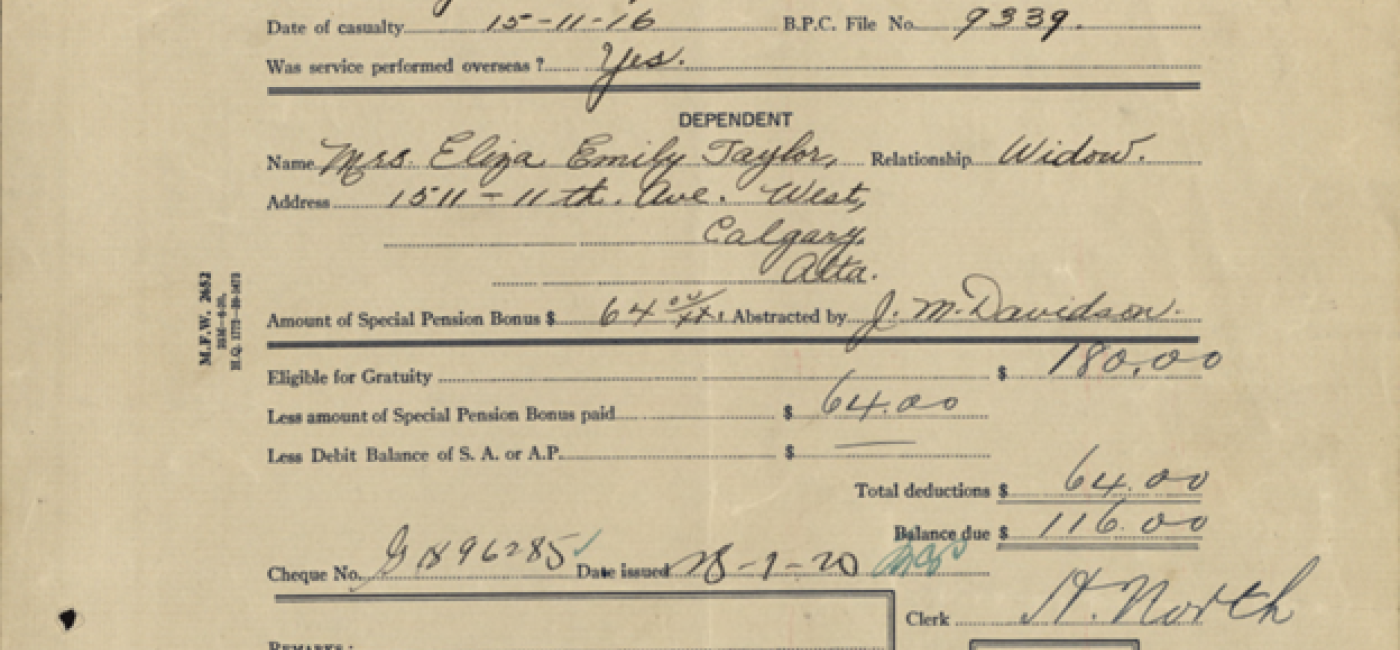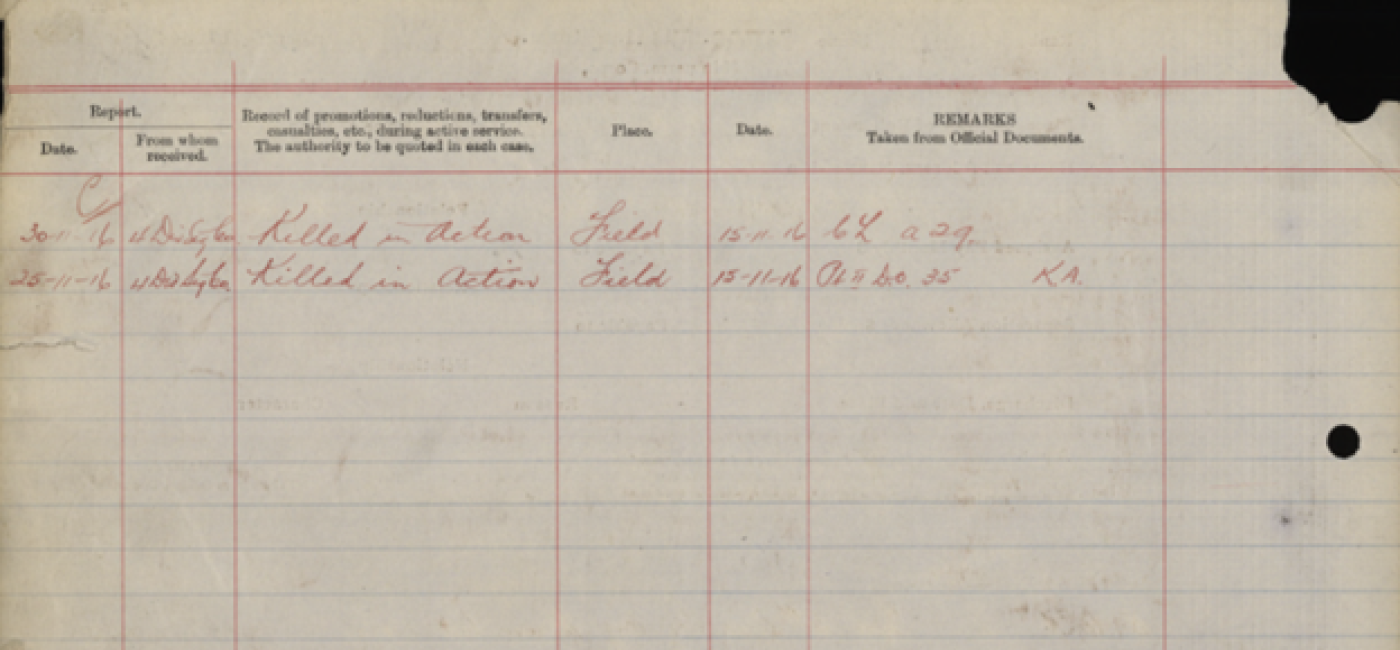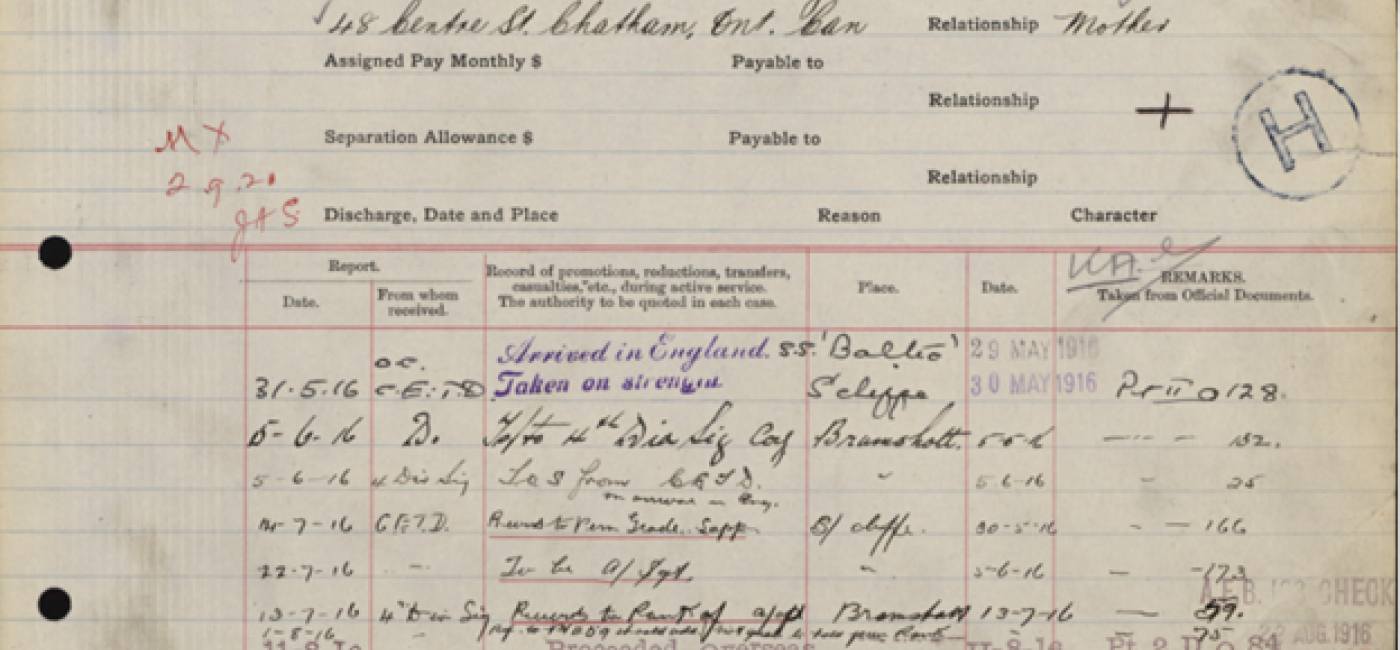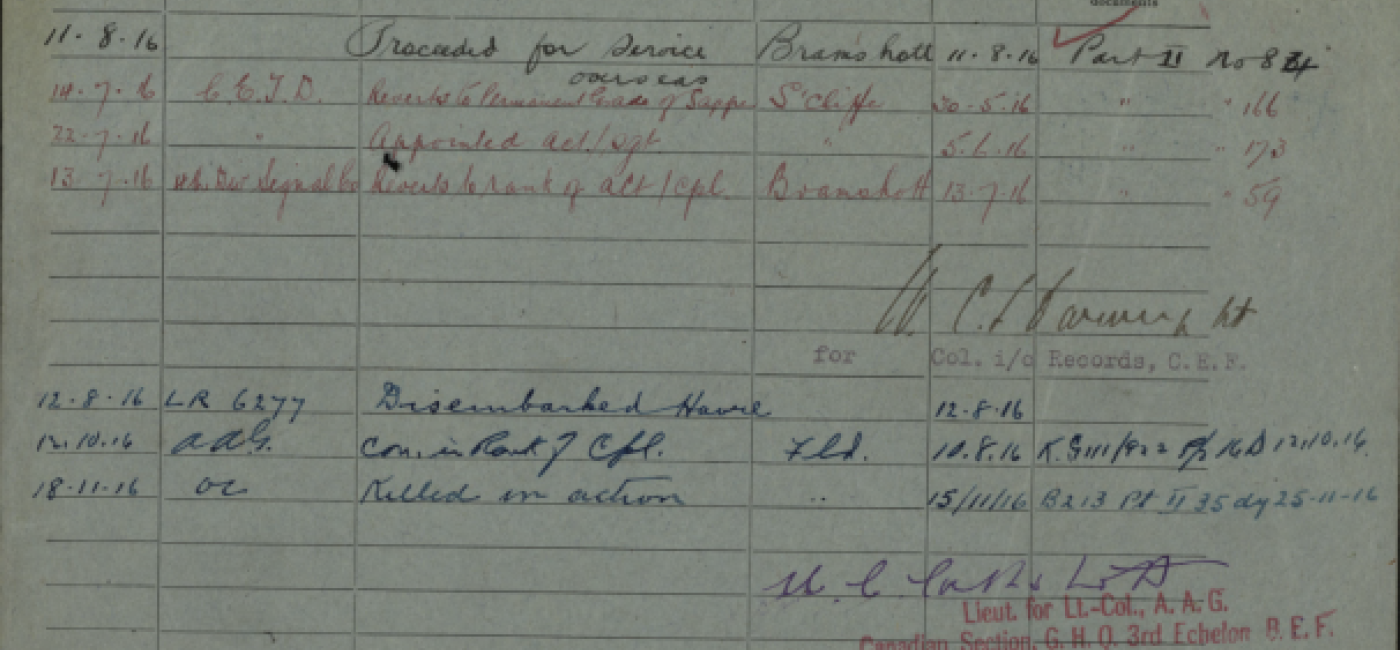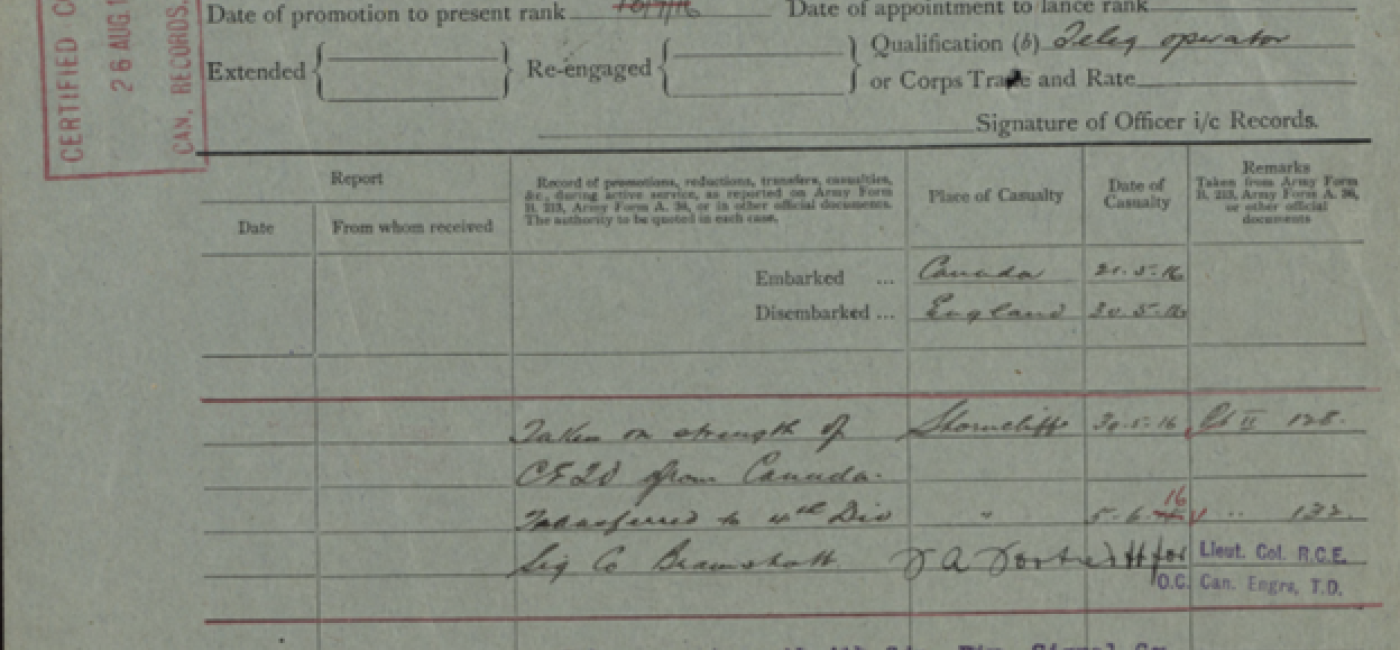Welcome to the June edition of The Despatch, Military Communications and Electronics Museum Newsletter!
CFSCE Change of Command June 2023
Did you know that the Canadian Forces School of Communications and Electronics (CFSCE) oversees the museum? And 2023 is a special year! In June, the museum will be having a new Commandant! In 2021, CFSCE had its first ever Commandant of Iraqi heritage, LCol Bahir Ali. This year he will be handing over command to our new Commandant, LCol Geneviève Audet, the first female CFSCE Commandant.
80 years ago Operation Husky Starts! The Invasion of Sicily Part 1
Prior to the invasion of Sicily, Operation Mincemeat was a deception conceived by British Intelligence to fool the Germans regarding the true target for the Allied invasion of Sicily. The body of Glyndwr Michael, a homeless man, was released off the coast of Spain carrying fake secret documents and a detailed false identity. British Intelligence had created a new identity for him, Major William Martin, a Royal Marines officer complete with a fiancée, photos, receipts, and letters.
The Spanish authorities turned over the documents to the Germans, who eagerly seized the opportunity to gather intelligence from the fake documents.
The deception worked remarkably well. German intelligence officers, including Admiral Wilhelm Canaris, head of the Abwehr (German military intelligence), were convinced of the authenticity of the documents. They diverted significant resources to reinforce their defenses in Greece and Sardinia, leaving Sicily more vulnerable to the actual Allied invasion. By mid May the Germans were convinced that the planned invasion would be in the Balkans, despite Mussolini’s belief that Sicily would be the target of the Allied invasion.
In May 1943, invasion training began for those selected to fight in Sicily in Operation Husky. The 1st Canadian Infantry Divisional Signals and 1st Canadian Army Tank Brigade Signals went to Scotland for training.
The training in Scotland encompassed:
Integration with Allied Forces: As Operation Husky was a multinational endeavor, the Canadians had to work with British and American units to ensure seamless communication among the different contingents. For the sake of standardization, the Canadians switched to British types of equipment which were in use in the Mediterranean Theatre. This equipment could be maintained or replaced from bases in the Middle East held by the Allies. The 1st Canadian Army Tank Brigade Signals removed their equipment from the “Cruiser, Tank, Ram” (used for training) to the Sherman Tanks used by the Eighth Army. This need for interoperability led to confusion for all units. This, coupled with the hundreds of minor adjustments to equipment of all sorts, tended to make things chaotic and seriously affected training.
Field Exercises: These exercises took place in and around Ayreshire Scotland. Exercise “Wetshod” involved setting up temporary communication centers, establishing field telephone networks, and deploying wireless radio stations over 250 kilometres. Combined with working with unfamiliar equipment, some sections were without waterproofing bags, some were missing remote controls for radio sets and there was a shortage of aerials for the No 22 set. In June, a landing rehearsal called Exercise “Stymie” was interrupted by bad weather but resulted in satisfactory results for the Signals. Finally, the Divisional Headquarters Signals practiced a setting up drill with a Landing Craft, Personnel (LCP).
On June 24, a slow assault convoy, loaded with most of the Signals vehicles and equipment left Scotland bound for Sicily. On June 28, a fast assault convoy, with mostly personnel aboard, followed suit.
Karen Young
Museum Manager
CanadaHelps Great Canadian Giving Challenge
As summer approaches, we're thrilled to share an exciting opportunity to help the museum through the CanadaHelps Great Canadian Giving Challenge. In this edition, we will highlight why supporting the Military Communications and Electronics Museum is a meaningful way to contribute.
The Great Canadian Giving Challenge
Every June, the Great Canadian Giving Challenge ignites a wave of philanthropy across the nation. Organized by CanadaHelps, this challenge encourages individuals and organizations to donate to Canadian charities for a chance to amplify their impact. For the entire month of June, every dollar donated to registered charities through CanadaHelps qualifies them to win an additional $20,000 donation. Donate Here!
Supporting the Military Communications and Electronics Museum
This month, we invite you to consider supporting the Military Communications and Electronics Museum (MCEM), an institution that holds immense historical and educational value. Located in Kingston, Ontario, the MCEM is dedicated to preserving and promoting Canada's military communications and electronics heritage.
Here's why your support for the MCEM is crucial:
- Preserving Our Military History: The MCEM showcases the evolution of military communication technology and its impact on Canada's military operations. By preserving artifacts, documents, and stories, the museum allows us to honor the brave men and women who served our country.
- Education and Awareness: The MCEM serves as a hub for learning, offering visitors a chance to explore interactive exhibits, participate in educational programs, and engage with knowledgeable guides. Supporting the museum contributes to fostering an understanding of our military history and the significant role communication played in shaping it.
- Inspiring Future Innovators: By showcasing the advancements in military communication and electronics, the MCEM inspires young minds to pursue careers in science, technology, engineering, and mathematics (STEM). Through hands-on activities and educational initiatives, the museum ignites curiosity and encourages innovation.
- Commemorating Sacrifices: The MCEM recognizes the sacrifices made by military personnel and their families. It is a place of remembrance, where visitors can pay tribute to those who served and reflect upon the challenges they faced in safeguarding our nation.
How You Can Help
Making a difference is as easy as a few clicks! Here's how you can support the Military Communications and Electronics Museum during the Great Canadian Giving Challenge:
- Visit the Military Communications and Electronic Museum Foundation’s link to CanadaHelps https://www.canadahelps.org/en/dn/14172 to make a secure online donation.
- Encourage friends, family, and colleagues to contribute as well. Share this newsletter! Together, we can maximize the impact of our giving efforts.
- Spread the word on social media using the hashtag #GreatCanadianGivingChallenge. By sharing your support, you inspire others to join in and make a difference.
Join the Challenge and Give Generously
As we embrace the spirit of giving, let's come together to support the Military Communications and Electronics Museum. Your generosity will help preserve our military history, educate future generations, and honor the sacrifices made by our brave servicemen and servicewomen.
Remember, each donation you make through CanadaHelps in June automatically enters the Military Communications and Electronics Museum for a chance to win an additional $20,000. Let's make a lasting impact!
Thank you for being part of this incredible journey of generosity.
Coffee with Veterans

Our next Coffee with Veterans is June 13 at 1000. All our welcome! Proudly sponsored by ADGA! www.adga.ca
Tourism Recovery 2023
Last year, in our first year of recovery after being closed for 17 months, the museum had 7897 visitors pass through our doors, a far cry from our 20000+ visitors in 2019.
This year the museum staff have a goal of almost doubling our numbers to 14000 visitors coming through our doors. Why do we think we might be able to achieve such a goal of almost 100% increased attendance? Museum staff identified that bringing the Kingston Trolley to the museum will support meeting our attendance and financial targets many years ago. This year, the museum has managed to create a partnership with the Trolley!
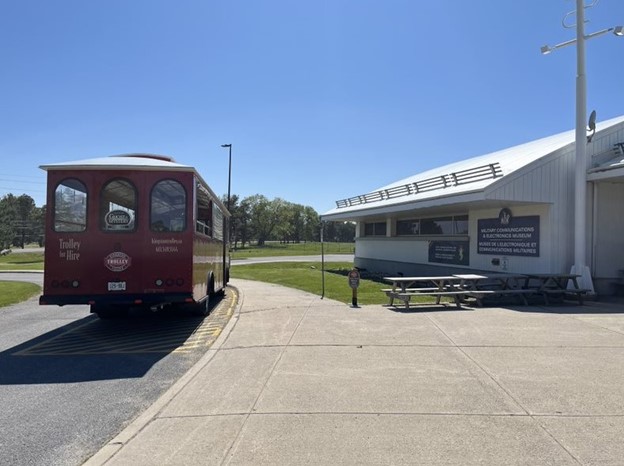
Mercury Shop
Skies are blue and summer is just around the corner! You know what that means; graduations, promotions, postings, promotions, family reunions, weddings and a whole lot more. Have you considered getting your personalized gifts at the Mercury Shop? We do more than just military engravings!
Need bridesmaid/groomsmen gifts? We can laser engrave your design on a glass! Posting gift with unit crest, name and rank? No problem!
Have someone who is part of the Canadian Armed Forces and want to get them a special gift? Have you considered rings? We have an assortment of military crests available.
For more information, please reach out to the Mercury Shop by phone 613-541-5395 or email mercuryshop@candemuseum.org
Leala Hampel
Mercury Shop Supervisor

Not Forgotten - William Adam Taylor
Ref: A. Library and Archives Canada – B9553-S053 – Personnel File of William Adam Taylor (- Library and Archives Canada (bac-lac.gc.ca))
B. Imperial War Graves Commission – Comprehensive Report B Headstone Personal Inscriptions – Adanac Military Cemetery Records “E” page 4.
Not Forgotten is intended to explore the personnel files of members of the Signal Corps in the First and Second World War, using primary sources to paint a picture of the service of those who fought and died in the early 20th century.
In this inaugural issue of Not Forgotten we are taking a look at the personnel file of William Adam Taylor, born in Chatham, Ontario on 10 March 1889. A Telegraph operator by age 26, he enlisted in the Canadian Over-Seas Expeditionary Force. By this time, he had already lost his wife, now a widower. With his mother as his Next of Kin, he enlisted on 23 August 1915 in Toronto. The Great War was raging on, having already lasted over a year.
His first posting outside of Canada brought him to 4th Division Signal Coy in Bramshott, UK on 31 May 1916. His rank appeared to be up for debate, as he was reduced in rank from Sgt to Cpl, and then to Sapper (Signals apparently being under the Engineer umbrella at the time). Less than a month later, however, he was promoted to the rank of Acting Sergeant, and a few weeks late was given the green light to deploy overseas to France. In October of that year, his Cpl rank was substantiated in the field.
William Adam Taylor was killed in action on 15 November 1916. He is buried at Adanac Military Cemetery north of Courcelette, France. His headstone inscription, at the request of Mrs. E.E. Taylor (Listed as his Widow. William Taylor likely remarried between his enlistment and deployment) reads:
THEY MAY REST
FROM THEIR LABOURS
AND THEIR WORKS
DO FOLLOW THEM REV14.13
More information on the life of William Adam Taylor and people like him can be found in his personnel file at Reference A, online.
Captain Sean Maas-Stevens
CFSCE


